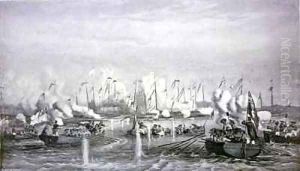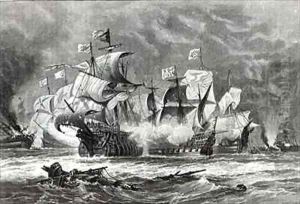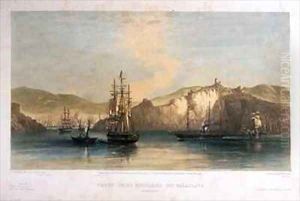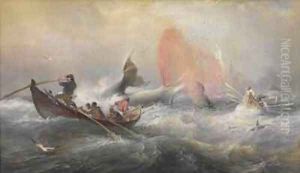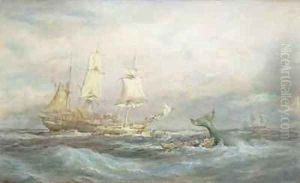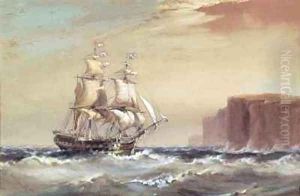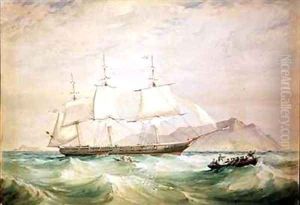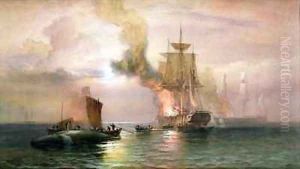Oswald Walter Brierly Paintings
Oswald Walter Brierly was an English marine painter, who became well-known for his depictions of ships and sea battles. He was born on May 19, 1817, in Chester-le-Street, Durham, England. Brierly was not only an artist but also a seaman, which provided him with the firsthand experience that would later inform his maritime paintings.
Brierly initially trained as an architect, but his passion for the sea led him to pursue a career that combined both his artistic talents and his love of maritime subjects. He was particularly interested in the accurate depiction of naval architecture and the dynamic elements of life at sea. Brierly's life took a significant turn when he was invited to join Admiral Sir James Clark Ross's Antarctic expedition as a draughtsman in 1842. This adventure allowed him to document the journey with his drawings and paintings, capturing the harsh conditions and the landscapes they encountered.
Following his Antarctic voyage, Brierly continued to travel and paint, spending time in Australia where he documented the burgeoning coastal cities and the activities of the Royal Navy in the region. In 1851, Brierly was appointed Marine Painter to Queen Victoria, a prestigious role that further cemented his reputation. He produced numerous works for the royal family and became involved in the artistic circles of the time.
Throughout his career, Brierly was involved in several exhibitions, particularly with the Royal Academy. His works were celebrated for their technical accuracy and their evocative portrayal of the sea. Brierly was also present at several important naval engagements, such as the Bombardment of Sebastopol during the Crimean War, where he sketched scenes that would later be developed into detailed paintings.
Oswald Walter Brierly died on December 14, 1894, in London, leaving behind a legacy as one of the foremost marine artists of the 19th century. His works remain on display in various collections around the world, serving as historical documents as well as artistic achievements.
